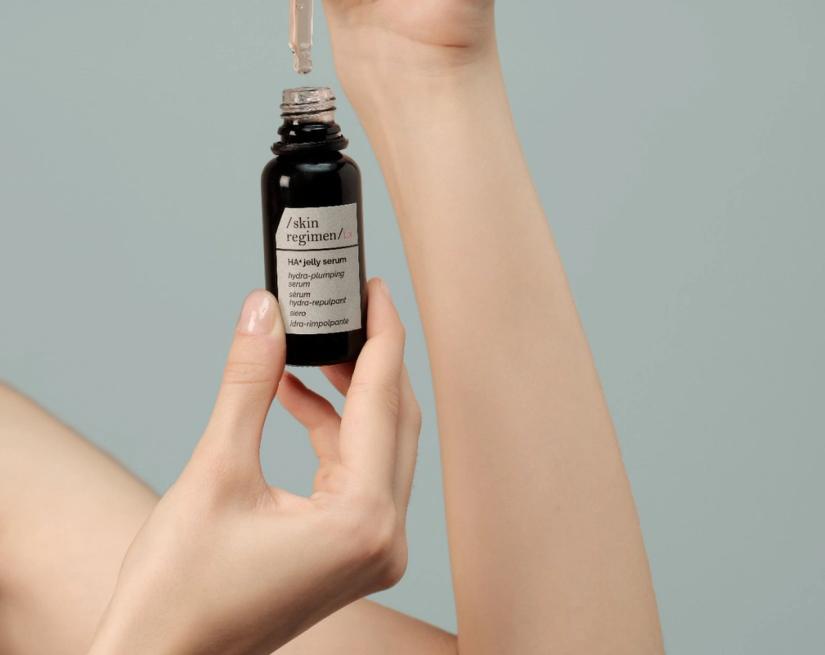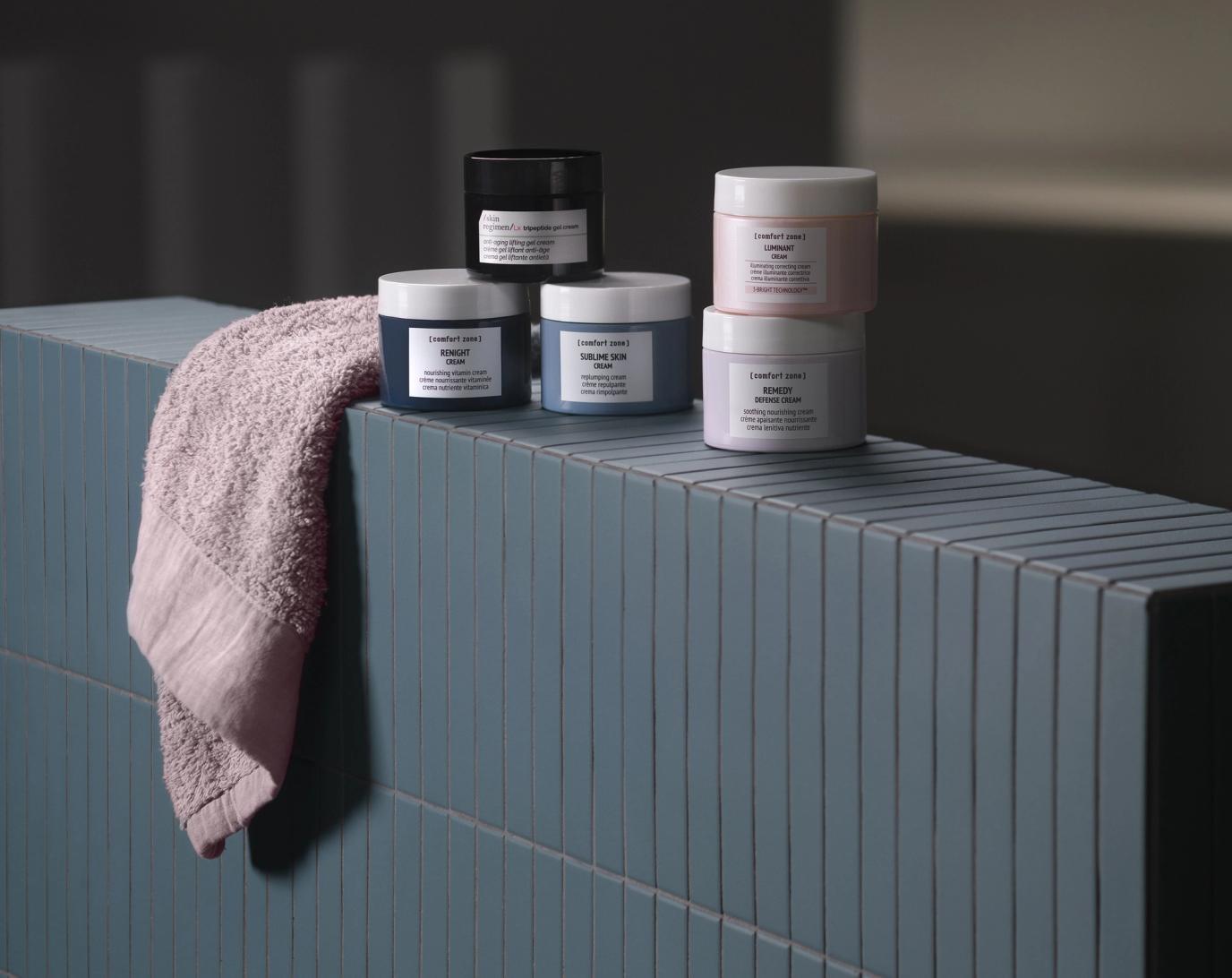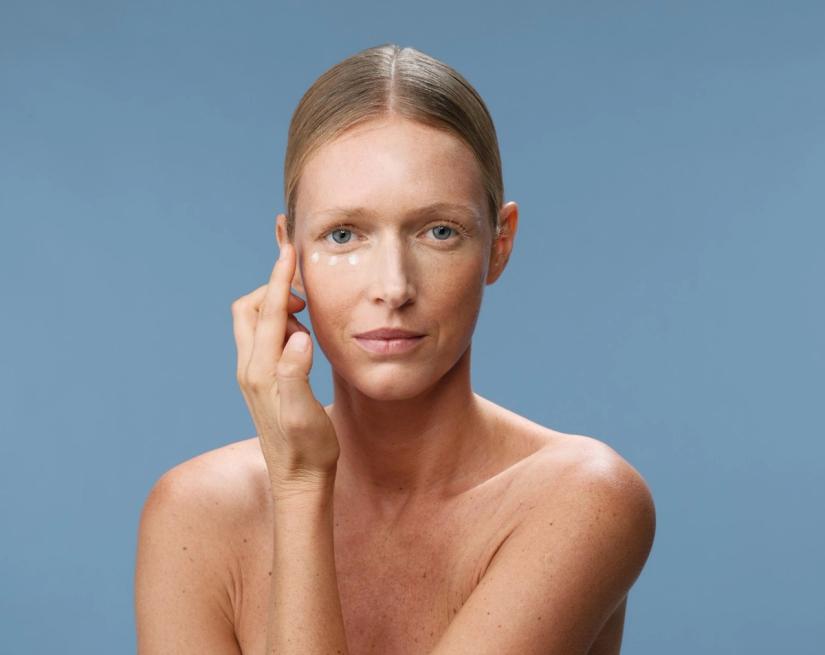skin care
Daytime Skincare Routine vs. Nighttime Skincare Routine
Maria Giulia Simonazzi | International Training Manager
5 min read
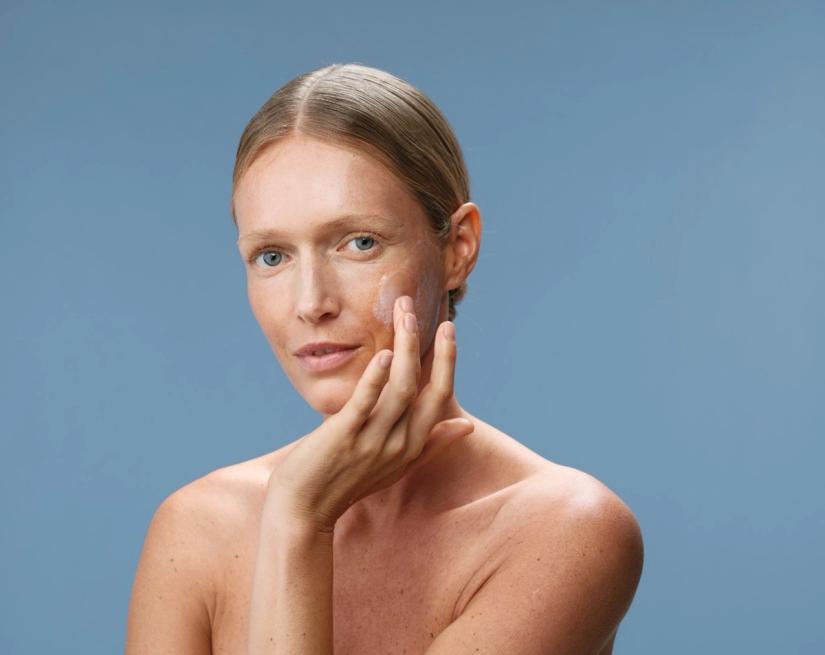
The first step to building an effective new skincare routine is choosing the right products for your skin type, but the second step—figuring out the perfect time and order to apply them in—is almost as important. Using the right product at the right time will help maximize the effectiveness of each product in your daily routine and improve your skin health.
Your daytime skincare routine should focus on protecting your skin from sun damage and pore-clogging agents like dirt and pollution, while your nighttime routine should be all about keeping your skin hydrated, treating acne-prone skin, and addressing skin concerns. In other words, daytime skincare is about protection from skin damage, while nighttime skincare aims to address skin issues before the regenerative process of sleep begins.
Why Your Skincare Routine Order Matters
The order in which you apply your skincare products can make them more (or less!) effective because some skin care products help boost absorption of potent active ingredients, while others prevent it. The general rule is to layer your skincare products based on weight.
According to dermatologist Dr. Michele Farber of Schweiger Dermatology Group, products should be applied from thinnest to thickest to ensure the heaviest products penetrate through lightest ones. In order to make the most of your skincare routine, follow our step-by-step guide for how to layer skincare.
Your Daytime Skincare Regimen
For people with normal skin, a basic skin care routine for the morning involves cleansing, exfoliating, and moisturizing. Try this basic morning routine to keep skin healthy and nourished.
Step 1: Cleanser
You might think cleansing your skin before bed is all you need to wake up fresh-faced, but another rinse in the morning with a gentle cleanser is a good idea.
Germs from your pillowcase can move to your face as you sleep. Even if you wash your pillowcase often, a morning cleanse is essential for clean, radiant skin. “While you're tossing and turning at night, bacteria from your saliva and oils from your hair are easily transferred to your face and eyes,” explains Dr. Rachel Nazarian, a dermatologist at Schweiger Dermatology Group in New York and New Jersey.
A healthy habit is to start each day with a wash using a gentle, non-drying cleansing cream. Splash your face with warm water, and mix a small amount of cleanser with water in your hands to create a soft foam. Massage the cleanser into your skin with gentle circular movements in upward strokes, avoiding the area around your eyes.
Step 2: Exfoliate Once Or Twice Per Week
Most experts recommend exfoliating once or twice weekly to remove built-up dirt and oil, reduce dullness, and sweep away dead skin cells (which promotes healthy cell turnover).
Exfoliating scrubs gently buff away dead skin, while chemical exfoliants and peels give pores a deep clean all on their own. Some exfoliants, like an exfoliating cleanser, turn into a creamy, cleansing foam when mixed with water to exfoliate deeply, ridding the skin of pollutants and dead cells for a brighter, smoother complexion. Focus your efforts on areas with blackheads or flaky skin (especially nose and cheeks), since those are the areas where clogged pores tend to crop up.
Step 3: Apply an Essence To Keep Skin Hydrated
An essence is illuminating moisturizer that nourishes the skin with its cooling serum-like texture. Essences are packed with reparative ingredients like fruit and flower extracts to help restore your skin after cleansing and provide hydration and cellular renewal for a more compact and luminous cells ready to absorb the products you will apply next.
This often-skipped step boasts tons of skin-boosting benefits, including balancing the skin's pH levels so your skin is in tip-top shape to absorb serums and moisturizers. While the exact origin of essences aren't known, documentation in Japan can be traced back to a centuries-old geisha beauty rituals. Using an essence provides the nourishment your complexion needs to look fresher throughout the day.
Step 4: Add Topical Acne Medications
If you're suffering from acne breakouts or have acne-prone skin, acne treatments like salicylic acid and benzoyl peroxide should be applied directly onto clean, dry skin at this point in your skincare regimen. Applying acne treatments at this point allows the medications to be absorbed most effectively into the skin.
There is one exception to this rule—acne formulas containing retinoids. Retinoids can sometimes be applied after moisturizer formulas in order to prevent dry skin or sensitive skin for some skin types. If you're looking for a booster that reduces the appearance of dark spots, enlarged pores, and pimples, try a tea tree oil face serum.
Step 5: Add an Antioxidant Serum
Serums are super-concentrated, nutrient-dense treatments that address specific concerns. They are added early into the skincare regimen to keep them as close to the skin as possible.
For example, applying a vitamin C booster in the daytime not only improves the appearance of dark spots, uneven tone, and enlarged pores, but it also provides a variety of benefits from blunting your skin's inflammatory response to neutralizing damage from UV rays and environmental pollutants.
Step 6: Apply Eye Cream
The skin around your eyes is the thinnest and most delicate on your face and the first to show signs of premature aging.
Regular use of eye cream will keep your eyelid skin elastic and can improve or prevent fine lines, undereye bags, and collagen loss. To apply, dab a small amount of eye cream under and around your eyes, including on the upper eyelid and just below the arch of the eyebrow using your finger pads.
Step 7: Moisturize with Sunscreen
Moisturizing your skin with SPF is the most important step of your skincare routine. Moisturizing not only hydrates your skin, but seals in all of the products in the preceding steps above. The CDC recommends daily sunscreen use, even on cloudy or cool days.
Anti-aging sunscreen protects your skin from harmful UV rays and shields it from the stress and aggressions of city life, such as fine particles and heavy metals, that accelerate skin aging. The World Health Organization reports that up to 90% of visible changes attributed to aging may be caused by sun exposure. As a result, daily sunscreen use could not be more important for preventing sun damage and promoting healthy, radiant skin.
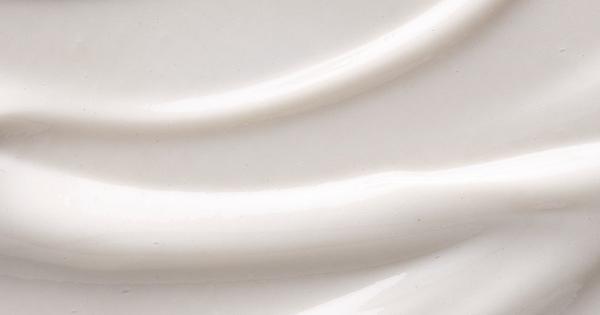
Your Nighttime Skincare Regimen
Step 1: Remove Makeup
If you're like most people, you apply makeup during the day. Many makeup brands are waterproof, so basic cleansers will not remove them thoroughly. It's important to adhere to an evening cleansing routine that rids your face of makeup and clears your pores so cell turnover can occur during the regenerative evening hours.
Each night, wipe off lipstick, gently lift away mascara, and de-smoke your smoky eye with a makeup remover or cleansing wipe.
Step 2: Cleanse
After makeup is removed, a separate cleansing routine is recommended by experts to remove the residue left behind by makeup removing products. Rinse away residue and residual oils and bacteria with a cleansing cream effective at removing makeup, SPF, dust, and residues that deposit during the day. This practice will leave your skin refreshed and prepared to absorb your nighttime skincare products.
Step 3: Exfoliate a Few Times a Week
In the evening after cleansing, some people choose to exfoliate. Whether you choose to exfoliate in the morning or at night is dependent on your individual habits and lifestyle, according to dermatologist Dr. Harold Lancer. If you wear makeup, exfoliating at night helps to lift any remaining makeup particles from the skin and ensure that your products are penetrating properly. Additionally, exfoliating at night can prevent red, irritated skin during the day.
Pour a teaspoon of your exfoliating cleanser in the palm of your wet hand and add a little warm water. Rub your hands together until obtaining a foamy cream. Apply your exfoliant to your face, avoiding contact with your eyes, then massage and rinse your face thoroughly.
Step 4: Apply Essence to Prevent Moisture Loss
You should be using an essence every time you wash your face, especially before bed.
Using illuminating moisturizer is like injecting a first round of moisture into freshly cleansed skin. Additionally, using an essence before bed also helps your skin absorb other products in your nighttime skincare regimen, rendering products like serums more effective. Gently apply the essence through tapping movements with the palm of your hand.
Step 5: Treat With Topical Acne Formulas
It's tempting to apply, then reapply, when dealing with breakout prone skin, but slathering on topical acne medications numerous times throughout the day won't clear acne faster. Instead, it will dry skin that's irritated and red—it may even make acne worse!
Using multiple acne treatments at once (for example, salicylic acid lotion on top of benzoyl peroxide cream, on top of Retin A gel) will also irritate and dry out your skin. Don't layer acne-fighting products on top of one another. Instead, space applications throughout the day—for example, use a salicylic acid cleanser in the morning and a benzoyl peroxide lotion at night.
Step 6: Apply Eye Cream
The skin around your eyes is the thinnest in your body, and you use the surrounding muscles all day long when blinking and squinting. As a result, it's important to give your eyes extra care and use your eye cream both morning and night.
In the evening, apply caffeine eye cream as part of your nighttime routine about an hour before you go to bed. This gives the product time to absorb before your eyes contact your pillowcase. Aside from addressing crow's feet and dark circles, eye creams can also serve to protect your delicate eye area from your other skin care products. Generally, you'd want to apply your eye cream before your serum to protect your eye area against potent active ingredients which could potentially cause skin irritation in this delicate area.
Step 7: Layer a Serum
Combat the effects of the day's pollution and brighten up your complexion by layering your treatments. Using a natural retinol serum and vitamin C booster at night will help your skin regenerate as you sleep, countering fine lines and imperfections. Like the rest of the body, skin does the bulk of its repairing, restoring, and regenerating as we sleep. This is why most targeted skincare treatments like prescription medications (tretinoin, acne, and rosacea creams), retinol creams, exfoliative treatments (peel pads and masks), and anti-aging serums (infused with peptides, growth factors, and other biologically active ingredients) are better used at night. If you're using multiple boosters, just remember, the same layering rules apply: go from thin to thicker formula.
Step 8: Moisturize
During sleep, the skin's transepidermal water loss is increased, meaning moisture is pulled out of the skin while we snooze. Using a peptide cream moisturizer formula with palmitoyl tripeptide-5 and dandelion extract before bed protects your skin from dehydration. To maximize the effects of your moisturizer, dot it on and rub into your skin in gentle circular motions from the center outwards. This daily massage will reduce puffiness, boost circulation, energize your skin, and release muscular tension in your face.
Step 9: Sleep With a Mask
Masks formulated with a night-specific formula typically contain hydrating or remodeling agents such as hyaluronic acid and retinol. Generally, their consistency is thick but non-comedogenic, meaning they let the skin breathe without clogging the pores. An overnight face mask with gluconolactone and alpha-glucan yeast can help remove impurities and build up and reveal a radiant morning complexion.
Summer vs. Winter Skincare Routines
These sample skincare routines are a good baseline for year-round skin health, but there are a few extra considerations to keep in mind as the seasons change.
In the winter, extra moisturizing is key. The cold weather contributes to dry skin, and wind can cause skin irritation. As such, you may want to shift to a more moisturizing cleanser to supplement your daily moisturizer.
Conversely, in the summer, some people experience oily skin and may opt for an oil-free cleanser. Additionally, although sunscreen is a staple in all seasons, some people prefer to adjust to a lighter weight for daily use in the summer months to prevent excess oiliness. If you do change to a lightweight sunscreen formula during the summer months, just be sure to bring out the heavy-duty stuff for any concentrated time spent in the sun. And if your skin changes—due to the environment, hormones or anything else—you should adjust your routine accordingly.
When it comes to skin care, following the rules makes all the difference. Make the most of your products by following this basic advice. We promise your skin will thank you!
